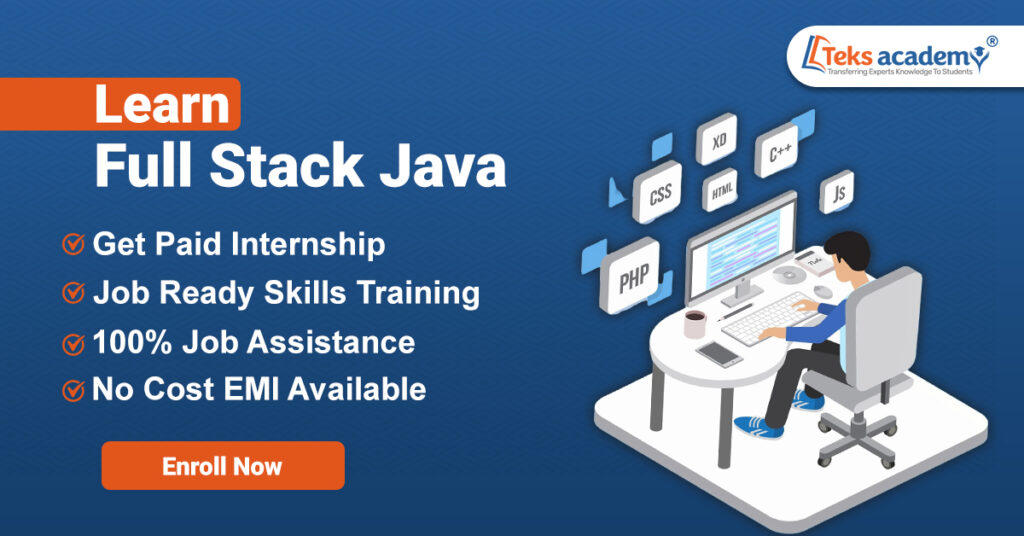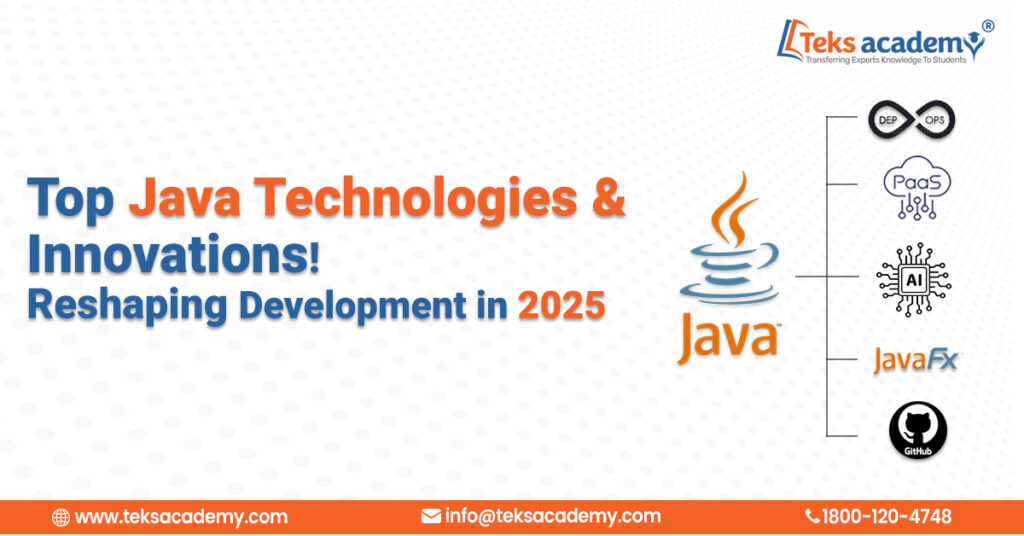Now-a-days developers are continuously adapting to modern demands. Such as performance, security, scalability, and many. Because of these demands, Java remains an unbeatable programming language. Due to the growth of programming ecosystem and to make applications stronger, it is focusing on new technologies. These applications are mostly adaptable for evolving industries.
The versions 8, 11, and 17 are significant LTS versions that are still widely used. In contrast, Java 21 was released in 2023 and will remain supported through 2031. Non-LTS releases like version 22 and 23 deliver rapid innovations. These provide ideal options for projects seeking quick updates. Looking ahead, Java 25 is expected to be released in September 2025. By promising stability and performance improvements for future applications.
What is Enhanced Java Tooling?
The following are the Integrated Development Environments (IDEs) for Java development. They offer a comprehensive environment for coding, testing, and debugging. These will be promising for the future of technology development.
- IntelliJ IDEA
- Eclipse
- Visual Studio Code
With smarter refactoring capabilities and improved performance diagnostics, developers can catch errors early. It helps in writing cleaner code and maintain productivity in projects. As tooling evolves, it supports rapid development and empowers collaboration. This makes it an essential aspect of the modern development ecosystem.
What is Cloud Computing? Why is it Essential for Java Development in 2025?
Cloud computing is nothing but delivering various services. Like storage, computing power, databases, networking, software, and analytics over the internet. With cloud computing, users can easily access information and data remotely. It is more flexible, scalable, and collaborative. In the current scenario, cloud computing provides great importance to Java development. These cloud services give developers the ability to optimize applications. It also builds, deployment, and expansion processes.
Starting from;
- Adoption of the microservices architecture.
- Use of serverless technologies.
- Cloud services.
These allow developers to simplify infrastructure management and emphasize engineering effort on development. The role of cloud computing in Java will allow the integration of applications. Also make them work smoothly. This is where data is processed with speed and app performance is guaranteed. It is essential for any Java developer.
Simplifying Development and Deployment with Spring Boot
Spring Boot is a pivotal framework within the Spring ecosystem. Designed to simplify the development and deployment of enterprise-grade applications. By leveraging the principle of convention over configuration, Spring Boot drastically reduces the setup time. It also minimizes the use of boilerplate code required to initiate Spring projects.
- Spring Boot is ideal for microservices, enabling lightweight, stand-alone applications and seamless RESTful API creation.
- It features auto-configuration that automatically sets up the application context based on class path dependencies.
- Built-in actuator endpoints offer application health metrics, and externalized configuration supports centralized management.
- Spring Boot integrates easily with Spring Cloud for service discovery, circuit breakers, and distributed configuration management.

What are the Modules?
The introduction of the Java Platform Module System (JPMS) in version 9 represents a significant evolution in the Java programming model. These modules provide a robust framework. These frameworks are used in structuring applications. You can also become familiar with these modules with the best Java Course in Hyderabad.
Key Features:
- Encapsulation and Access Control.
- Enhanced Performance.
- Improved Dependency Management.
It comes with 92 standard modules in the Java Development Kit (JDK) as of version 17. They provide functionalities like base language features, networking, cryptography, and XML processing. Core modules saw substantial evolution over the years! Especially after the introduction of the Platform Module System in version 9.
Here’s an overview of the module count and enhancements in key versions:
- Java 9: Introduced the Module System with 75 modules, primarily for modularizing the JDK.
- Java 10 to 11: Maintained 75 modules with few additions like the HTTP Client API in Java 11, an LTS release.
- Java 12 to 16: Continued with a steady module count, focusing on internal JEP (Java Enhancement Proposals) for feature updates.
- Java 17: This version updates for the Z Garbage Collector and sealed classes with 75 modules.
- Java 21: This offers new performance and security improvements, with 75 core modules.
Oracle: Java 25 Version will be released in September 2025
It continues to evolve beyond version 22. Oracle’s recent release schedule includes Java 23, launched as a rapid feature release, introducing new preview features for developers focused on flexibility and forward-looking enhancements like structured concurrency and advanced memory management APIs. It provides short-term support, catering to developers who want to experiment with the latest features.
Future versions, including Java 22 and anticipated Java 25 will have similar core module counts. The only difference is that they focus on new libraries and features for modern application demands.
What are the technological advancements ?
Below we are discussing the top technological advancements. For being updated, join the best Java course in Hyderabad.
Artificial Intelligence (AI): AI integration is growing, with libraries like Deeplearning4j and TensorFlow Java enabling machine learning, natural language processing, and predictive analytics in enterprise applications.
Platform as a Service (PaaS): PaaS platforms like Heroku and Google App Engine allow developers to build, deploy, and scale applications without managing infrastructure, fostering a focus on coding and innovation.
GitHub: As a leading collaboration platform, GitHub offers pull requests, issues, and project boards, with GitHub Actions enabling optimized CI/CD workflows.
Mobile App Development: The developers use JavaFX, Android SDK, Flutter, and React Native to build cross-platform mobile apps, leveraging Java expertise in mobile environments.
DevOps: DevOps promotes collaboration between development and operations, using tools like Terraform for infrastructure as code and Prometheus for monitoring to streamline deployment and improve delivery.
Conclusion
The java ecosystem is ever developing, new libraries like Spring Boot framework and the introduction of modularity in versions give the developers a new edge to create scalable and manageable applications. Artificial intelligence, PaaS, and DevOps are some of the emerging developments. These will have an impact on the practice of current software development. The usage of ORM technologies enhances data management skills, including helpful project management strategies.
But now the actual question might be raised. How to conquer such an advanced language? Teks Academy- the best software training institute in Hyderabad offering Java course. It has a blended curriculum and advanced pedagogy. Teks also offers live projects that help in Realtime learning experience. This is the most advanced and advisable Java programming language for beginners who are aspiring to build a tech career.






